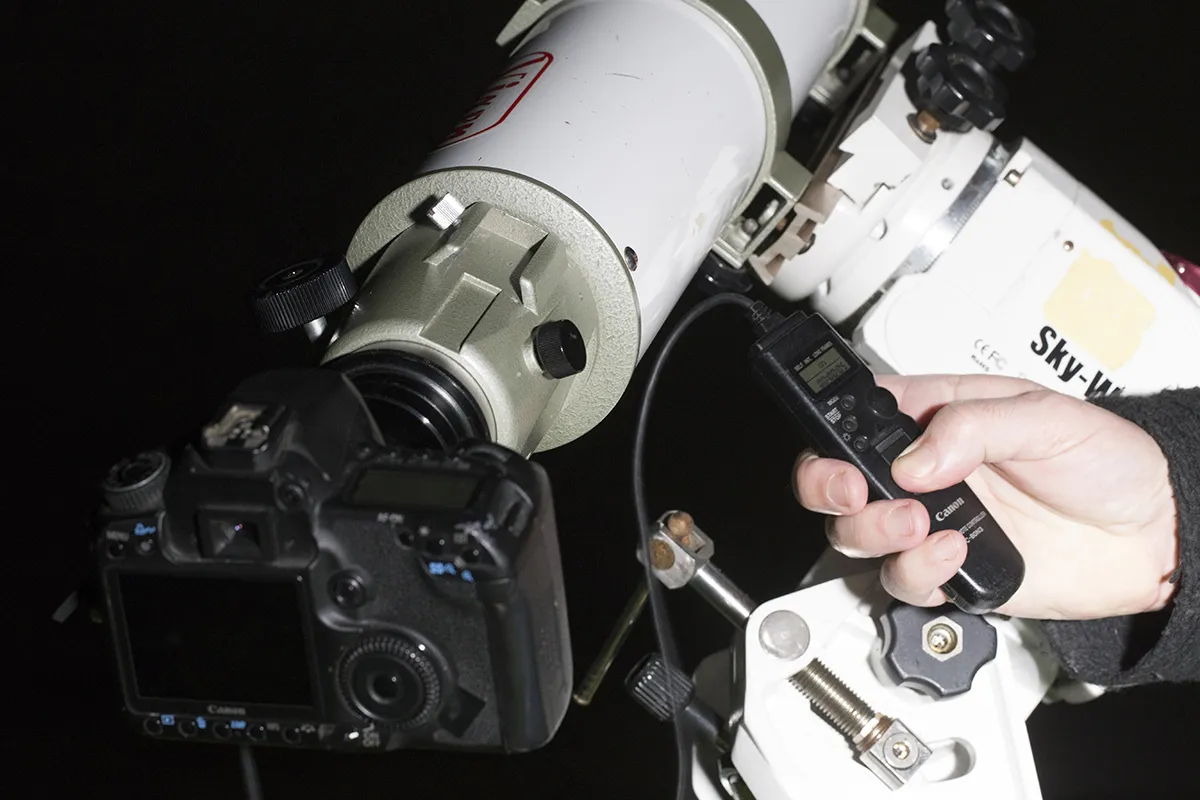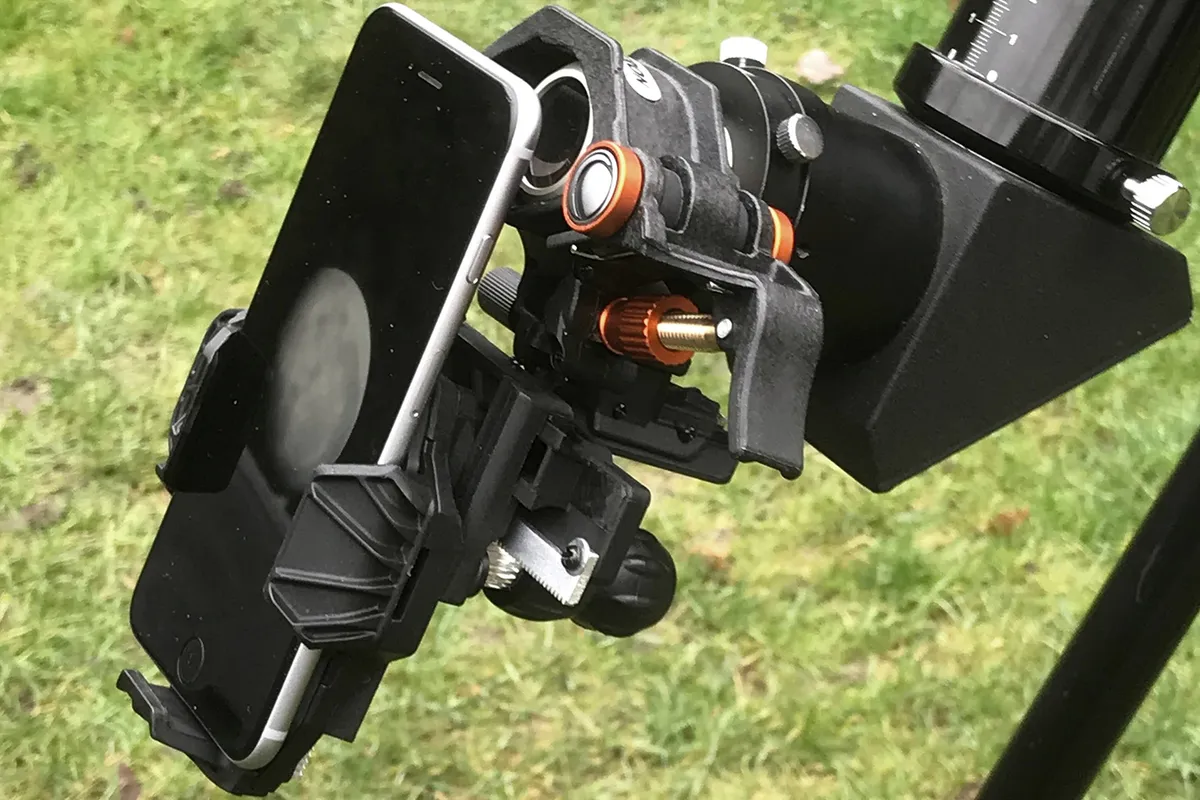The eyepieces in a pair of binoculars cannot usually be removed, which limits your imaging options somewhat.
The easiest method is to afocally couple the camera to the binoculars.
Read our guides to the best budget binoculars and the best binoculars for astronomy
Afocal coupling is a technical term for simply holding a camera up to the eyepiece of the binoculars, in this case.
Usually though, a camera is afocally coupled to a telescope rather than a pair of binoculars.

In either case, good afocal coupling requires the surface of the camera’s lens to be virtually touching the eyepiece.
But direct contact should be avoided as it could result in scratched lenses.
Hand-holding a camera up to a telescope eyepiece isn’t a particularly easy thing to do.
To get the best results, some form of specialised afocal coupling platform should be used to keep the camera rigid and on the same axis as the telescope.
But to the best of my knowledge, no such adaptor exists for binoculars, but you can certainly get telescope smartphone adapters that may also work for binoculars.
Otherwise, for camera a bit of astro-DIY may be required.

Mounting the final assembly onto a tripod or driven mount would also require a bit of DIY work as, for the most part, small binoculars don’t come with a tripod adaptor either.
An alternative to trying to couple a camera to a pair of binoculars is to purchase binoculars with a pop-up camera already built in.
Several manufactures sell such devices: for example, the Bushnell Imageview or Meade Captureview binoculars offer this facility.
However, the cameras in these instruments tend to be geared to brighter, short-exposure subjects, rather than being designed for long exposure deep-sky imaging.

